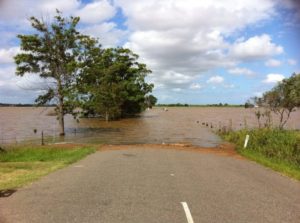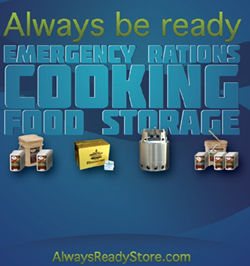Floods
 While Britain does not suffer from some of the most horrendous weather events experienced elsewhere in the world, we do have our fair share of floods, and they are getting worse!
While Britain does not suffer from some of the most horrendous weather events experienced elsewhere in the world, we do have our fair share of floods, and they are getting worse!
Flooding in the UK usually comes from 1 or more of 3 sources:
- Exceptional rainfall
- Heavy snowfall followed by a rapid thaw
- Coastal storm surges
Our flooding since the start of the new millennium has mainly been from exceptional rainfall. This has given events such as flash floods and the repeated river overflows in Gloucestershire, Yorkshire, and elsewhere, particularly in 2007, 2010, and 2012, with some towns and cities having areas flooded by overflowing drains and excessive surface water on paved areas.
That latter effect has caught out many people who live miles from the nearest river and have never experience flooding before, nor expected to. Meanwhile some towns and cities like York and Tewksbury that have known occasional flooding many times over the centuries have found it becoming an annual event. And despite the efforts of various agencies in some areas it is becoming increasingly damaging. Those people in flood prone areas in what were once expensive and desirable homes now find that they can neither sell nor get insurance.
Depending on the level, flooding can be anything from an inconvenience to a disaster. If your house or business is affected by deep flooding you will almost certainly have to evacuate and in many cases people have not been able to return to use the buildings for over a year. We have friends in this situation and they initially went to a hotel or local evacuation center and were eventually moved to temporary accommodation; in 1 case a touring caravan (trailer), for almost 18 months before the family could return to their home. In some buildings the foundations or structure have been so badly damaged the only safe alternative was demolition.
Threats
So, what are the threats from flooding? Direct threats include:
- Drowning – people drown in their buildings, in their cars, and on the street when the water catches them unexpectedly or while trying to evacuate, and often, tragically, while trying to rescue another person or animal.
- Electrocution – in a building or outside when power lines are brought down or substations flooded.
- Chemicals – flushed out of their normal storage.
- Sewage and other biological hazards.
- Injury – Flood waters can move heavy objects (e.g. trees, fences, cars, etc) at high speed. If you are struck by one of these objects you might sustain severe injury. The water also covers many sharp and otherwise dangerous items, so moving through even still flood water can pose real hazards.
- Loss of possessions through damage or theft, destruction of cars and other transport, and even loss of your home.
And what can you do to minimize the threat?
Precautions and preparations
- The first thing to do is evaluate your risk of flooding. Go online and research the flood risk and warnings for your area.
- Sign up for the text message and email warnings and find out what other alert measures might be available in your area.
- Take measures to prevent or minimise the damage from flood water. This could include:
- Consider your use of rooms – could you use a higher level room for the living room/study/etc where the greatest number and most expensive, electrical equipment is used and instead use a ground floor room as a bedroom?
- Install non-return valves on water outlet pipes, including from the washing machine and dishwasher.
- Use silicone around doors and windows to reduce the likelihood of water penetration.
- Install fittings for flood gates on all external doors and low level windows, and airbrick covers close to ground level. Keep the gates and covers easily available.
- Consider replacing timber floors and carpets with solid floors and tiles – rugs are easier to move (and are) less expensive to replace than carpets, and even if the tiles have to be reaffixed, the cost of sheet ply base is lower than laminate. Also investigate replacing at least the lower steps of a staircase with concrete instead of wood.
- Replace low level, chipboard and laminate kitchen cupboards with freestanding ones made from plastic or stainless steel.
- Replace wooden internal doors, skirting boards etc with plastic ones.
- Use lime plaster on ground floor walls rather than standard gypsum plaster.
- Paint the outside and internal ground floor walls with waterproof sealant or paint. Consider a 2 level decoration scheme so that you only have to redecorate the lower level.
- Have electrical sockets raised to waist level, or higher if likely water levels require it, rather than near the floor – they’re more convenient there too, especially if you have back problems.
- If you have already been flooded, or believe the risk is high, buy a high-capacity pump that can extract water faster than your extra precautions will allow it to enter.
- Prepare a Flood Plan. This should include:
- Safety plan – Know how to turn off your electricity, gas, and water supplies. Do it before the flood water reaches the switches!
- Protection plan – know what to do to prevent or delay water entering your property. Store the equipment and supplies you will need (e.g. sandbags, floodboards, airbrick covers, etc) in a place you will be able to get them.
- Storage plan – the things you will not take with you if you evacuate but want to protect by moving them upstairs or to some other safe location. Keep this plan easily available! In an emergency you have many things to think about and a list will help you not to forget something you might otherwise mourn the loss of. Think about pets, valuables (monetary and emotional), vehicles, electronics, furnishings, etc. Remember that looting of evacuated buildings is very common. Even if you make things safe from the water you might lose them to thieves.
- Evacuation plan – how will you get out, where will you go, what will you take?
- Contact plan – List numbers for family, relatives, and emergency services, insurance companies, etc. Agree a contact that any family member who is out of the area when flooding occurs should call if they cannot contact people who were at home. Also agree close and more distant meeting places that are not likely to be affected by the flooding for use in case the telephone system is out.
- If you haven’t already got one (??) prepare an evacuation bag. This might be your Bug Out Bag or part of it, but remember that you are more likely to be going to a hotel/evacuation centre/friend than a bivvy site in the backwoods, which if you are being flooded out due to torrential rain is probably the last place you would want to go! Suggestions on what to include are listed in the Annexes.
What to do if it happens
- Keep informed about the situation – if you have online access keep visiting relevant sites. Tune your radio to a local station and listen for news and warnings. Watch the area around you.
- Make sure neighbours and friends you care about also know what is happening and what to do. Make arrangements to help one another where you can.
- Put your Plans into action.
- Put plugs in the sinks and bath and weigh them down with a sandbag or other heavy cover. Put a plug (e.g. sandbag) in the toilet
- If the flooding is so sudden that you cannot get out, move yourself, family, evacuation kit, and emergency supplies to the safest place in the building, then prepare for signalling to potential rescuers.
- If you can escape, secure your property and then get out early – the longer you leave it, the more difficult and dangerous evacuation will be.
- Take great care when moving through water and test to ensure you do not get in too deep. A long stick – even a broom handle is good – can be a great help. Six inches of moving water can knock you over if you are walking and 2 feet can lift and float your car.
- Beware of holes e.g. from displaced manhole covers.
- If you have had to move through flood water, then as soon as you are safe get out of the wet clothes and wash and disinfect yourself and the clothes.
- Put your contact plan into action – let family and friends know you are safe and how they can contact you.
- Contact your insurance company – and landlord if you have one – and employer, to let them know what has happened and how to contact you.
- If you need additional official help contact your council, and for other help any support/survival group you might have.
After the flood
When the waters recede it will be time to take stock and begin recovery action.
- As soon as possible, return home to secure your property.
- Take care as you enter:
Flooring might be damaged or displaced,
Other structures including staircases might be unsafe
There could be an electrical hazard
Anything touched by the floodwater will be contaminated
There might be human or animal intruders
- Make a list and loss-evaluation of any property destroyed or damaged and take photographs or videos. Your insurance company will make arrangements to assess the damage to the building and make arrangements for repair.
- Do NOT switch on any of the mains utilities until they have been checked and approved as safe by a professional.
- Do NOT use any food or drink any water that might have been in contact with flood water. Water under pressure might have been forced into bottles, jars, or packets. Thoroughly clean the outside of sealed tins before opening. Do not drink mains water until it has been declared safe and then not until you have run enough through your water system to thoroughly flush and clean it.
- If you are cleaning up yourself expect:
Outside: fallen walls and fences, all plants other than trees and large bushes washed away, missing rubbish bins, muck and rubbish everywhere.
Inside: destroyed carpets, falling plaster, disgusting smells, ruined cupboards/furniture/kitchen white goods/stuff in the garage/workshop/shed (including preps?).
- If you need to pump out water including from under the floorboards, you can hire a pump or might be able to get help from the fire service. Check with your insurance company first, this might be part of its tasks and only to be done when a nominated contractor decides it is safe to do so.
- If you are cleaning up yourself you can use ordinary cleaning products, a garden hose, etc, but do wear overalls and rubber gloves and boots. You might need a skip (dumpster) or lots of rubbish bags. The local authority might arrange extra collections.
- It will take much longer for the house to dry and be restored than you think: be patient!
- Be aware, especially if you are living close-by, that thieves will be waiting to take any opportunity to steal materials as your home is being repaired. Some of our friends had the new copper piping and other fittings stolen 3 times before the property was repaired enough to be secured!
Floods are bad news, but you can limit their effects and dangers by proper awareness, planning and response, and as in all emergencies many of the preps you make will be as useful for this one as any of the others.
By David E Crossley
[wpgfxm_divider divider_image=”css”]
 David E Crossley is a British Prepper living in Scotland. He has been into prepping for over 40 years and has built his experience through 22 years as a soldier, 4 years as the Training Manager for Scotland for the British Red Cross and many years studying and doing the prepping things so many people just think or talk about. He is also a published author. Learn more about him at his website at: www.tfns.co.uk/index2.html
David E Crossley is a British Prepper living in Scotland. He has been into prepping for over 40 years and has built his experience through 22 years as a soldier, 4 years as the Training Manager for Scotland for the British Red Cross and many years studying and doing the prepping things so many people just think or talk about. He is also a published author. Learn more about him at his website at: www.tfns.co.uk/index2.html








0 Comments